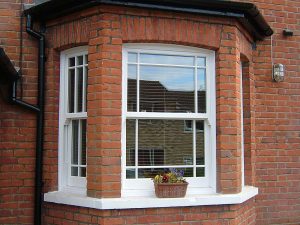As winter approaches, preparing your home can ensure comfort and efficiency during the colder months. Proper preparation helps prevent potential issues and keeps your home safe and warm. Here’s how to get your house ready for winter:
1. Inspect and Prepare Your Heating System
Check Your Heating System
Before the cold sets in, schedule a professional inspection of your heating system. Technicians can ensure your furnace or boiler operates efficiently, reducing the risk of breakdowns.
Replace Filters
Change the filters in your heating system to maintain good airflow and improve energy efficiency. Moreover, dirty filters can strain your heating system and lead to higher energy bills.
Test Thermostats
Ensure your thermostat is working correctly. Additionally, consider upgrading to a programmable thermostat to better manage heating and save on energy costs.
2. Seal Drafts and Insulate
Seal Windows and Doors
Check for drafts around windows and doors. Use weatherstripping or caulking to seal gaps and prevent heat loss. Adding draft stoppers can also help.
Insulate Your Home
Inspect and improve insulation in your attic, walls, and floors. By doing so, you keep warm air in and cold air out. Consequently, this reduces heating costs and increases comfort.
Cover External Pipes
Insulate outdoor pipes to prevent freezing and potential bursting. Additionally, use pipe sleeves or heat tape to protect vulnerable pipes. By taking these steps, you can ensure your plumbing system remains intact throughout the winter.
3. Prepare Your Roof and Gutters
Inspect Your Roof
Check for damaged or missing shingles and make necessary repairs. A well-maintained roof prevents leaks and water damage during winter storms.
Clean Gutters and Downspouts
Remove leaves and debris from gutters and downspouts to ensure proper drainage. Additionally, clogged gutters can lead to ice dams and water damage.
Install Gutter Guards
Consider installing gutter guards to reduce the buildup of debris and, consequently, make maintenance easier. Additionally, gutter guards can help prevent clogs and protect your home from water damage.
4. Check for Safety and Emergency Preparedness
Test Smoke and Carbon Monoxide Detectors
Ensure smoke and carbon monoxide detectors are functional and replace batteries if needed. Winter increases the risk of carbon monoxide poisoning due to heating systems.
Prepare an Emergency Kit
Assemble an emergency kit with essentials such as non-perishable food, water, medications, a flashlight, and batteries. Prepare for potential power outages and severe weather.
Inspect Fireplaces and Chimneys
Have your fireplace and chimney inspected and cleaned to prevent fire hazards. Ensure the flue is open before using the fireplace.
5. Maintain Your Outdoor Spaces
Store Outdoor Furniture
Clean and store outdoor furniture, or alternatively, cover it with weather-resistant covers to protect it from the elements. Consequently, by taking these steps, you can extend the life of your furniture and ensure it remains in good condition for the next season.
Winterise Your Garden
Prepare your garden for winter by mulching plants and pruning trees. Additionally, remove any dead or diseased plants to prevent issues in spring.
Clear Walkways and Driveways
Keep walkways and driveways clear of leaves and debris to prevent ice buildup. Additionally, consider applying a de-icing agent if needed.
Conclusion
Preparing your home for winter involves several important steps, starting with ensuring your heating system is efficient. Additionally, protecting your home from cold weather is crucial. By addressing these areas, you can enhance comfort, reduce energy costs, and prevent potential winter-related problems. Furthermore, taking these proactive measures will help you enjoy a warm and safe winter season.












